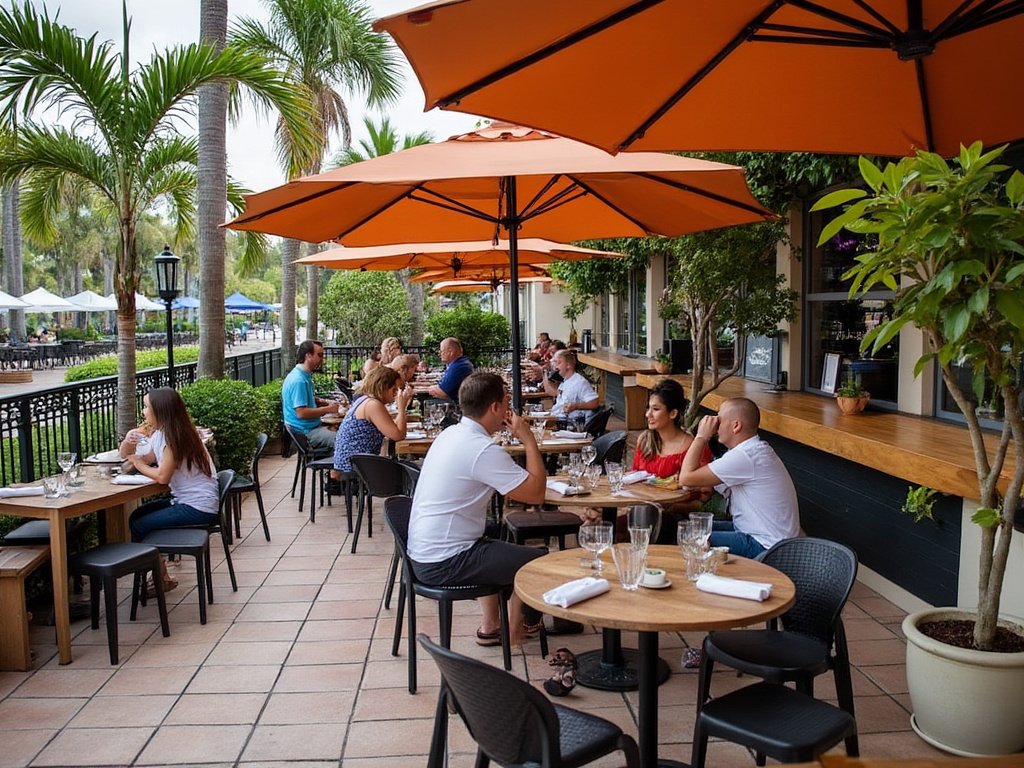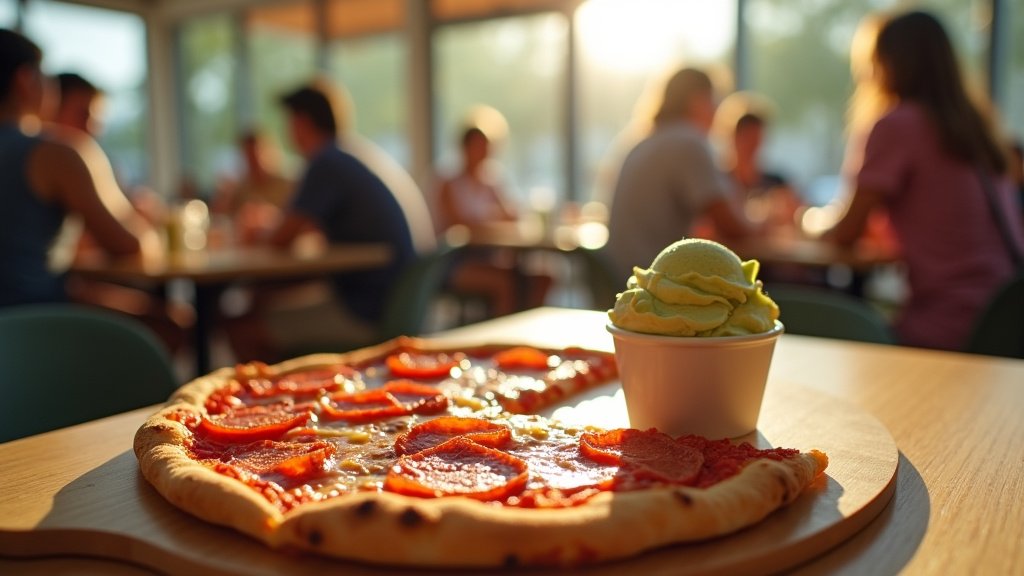Miami, Florida, is known for its sun-soaked beaches, vibrant nightlife, and, of course, its fusion of cultures. This cultural melting pot has always shaped the city’s identity, and nowhere is this more evident than in its food scene. While the glitzy restaurants of South Beach or the high-profile establishments in Brickell often grab headlines, there’s a quieter, tastier revolution happening in the less touristy corners of Miami. Neighborhood eateries are redefining what it means to dine out in the Magic City, and they’re doing it with passion, creativity, and an unmistakable local flair.
Miami’s culinary renaissance isn’t happening in Michelin-starred dining rooms alone; it’s alive in cozy cafes, family-owned bistros, and hole-in-the-wall spots tucked away in unassuming neighborhoods. These hidden gems are more than places to grab a meal—they’re community hubs, cultural showcases, and engines of innovation. And as Miami continues to attract transplants from across the globe, these local spots are carving out a new identity for the city’s food scene, one plate at a time.
Take Little Haiti, for instance. This vibrant enclave has long been a bastion of Haitian culture, and its culinary offerings are finally getting the attention they deserve. Places like Chef Creole Seafood & Catering are blending traditional Haitian dishes with a Miami twist, offering dishes like griot—a succulent fried pork dish served with pikliz (spicy pickled vegetables)—that speak to both nostalgia and bold experimentation. Locals flock to these spots not just for the food but for the sense of belonging that comes with them. Chef Creole, for example, often feels like an extension of the community, with lively banter, soulful music, and the ever-present aroma of simmering spices wafting through the air.
Then there’s Allapattah, an area that has been quietly developing its culinary clout over the years. Known for its rich Dominican and Latin American roots, the neighborhood boasts restaurants that are equal parts comforting and adventurous. Spots like Lung Yai Thai Tapas take the idea of tapas—a distinctly Spanish concept—and reinterpret it with Thai cuisine. It’s this type of creative cross-pollination that defines Miami’s food culture. At Lung Yai, the menu is packed with small but mighty dishes like moo ping (grilled pork skewers) and gaeng keow wan (green curry), each crafted with precision and a pinch of Miami-style flair. The restaurant’s no-reservations policy and a bustling vibe only add to the charm.
Coconut Grove, once a sleepy bohemian village, is now a thriving hub for young professionals, families, and, increasingly, food lovers. This neighborhood has seen a wave of artisanal cafes, gourmet bakeries, and trendy bistros in recent years, but the charm lies in its diversity. Places like Ariete, led by Chef Michael Beltran, are reinventing Cuban-American cuisine. Beltran’s take on lechón—roast pork—is an ode to tradition but with a contemporary twist, served with smoked plantain puree and a tangy mojo reduction. The restaurant itself feels like a microcosm of Miami: familiar yet innovative, casual yet sophisticated.
Wynwood may be better known for its street art and nightlife, but its food scene is just as vibrant. While trendy spots like The Salty Donut have put the neighborhood on the map, the real magic lies in its smaller, lesser-known haunts. Wynwood’s food trucks, for example, are a treasure trove of flavor. Here, you can find everything from arepas bursting with cheese and shredded beef to Cuban-inspired sushi rolls that challenge your expectations. And because food trucks are inherently mobile, they embody the essence of Miami’s ever-changing, dynamic energy.
Of course, no conversation about Miami’s culinary gems would be complete without mentioning Overtown. This historic neighborhood has undergone a revival in recent years, and its food scene is flourishing as a result. Red Rooster Overtown, helmed by celebrity chef Marcus Samuelsson, is a standout example. The restaurant celebrates the soul of Overtown through its menu, offering dishes like hot honey chicken and deviled eggs with smoked trout. But Red Rooster isn’t just a place to eat—it’s a venue for live music, art, and community events. It’s a reminder that in Miami, food isn’t just sustenance; it’s an experience.
What makes these neighborhood eateries so special isn’t just the food—it’s the stories behind them. Many are run by immigrants or first-generation Americans who bring their cultural heritage to life in every dish. They take the flavors they grew up with, marry them to Miami’s diverse palate, and create something entirely unique. This isn’t fusion for the sake of novelty; it’s fusion born out of authenticity and necessity. And that authenticity is something that diners, especially locals, crave.
Beyond the food itself, these restaurants are changing the way Miamians think about dining. For years, the city’s food scene was dominated by big names and bigger price tags. But as neighborhood spots gain traction, they’re proving that exceptional dining experiences don’t have to come with a side of pretension. These places are approachable, affordable, and undeniably Miami.
The rise of neighborhood eateries is also having a broader economic impact. They’re creating jobs, revitalizing forgotten corners of the city, and attracting both locals and tourists. In areas like Little River, which was once overlooked, the emergence of trendy cafes and bakeries has brought new life to the community. Restaurants like Rosie’s, a soul-food brunch spot, draw crowds every weekend, injecting a sense of excitement into what was previously a quiet stretch of town.
The COVID-19 pandemic also played a role in this shift. As larger restaurants struggled to stay afloat, smaller, nimble operations found ways to adapt. Many of these neighborhood spots pivoted to takeout and delivery with ease, winning over a loyal customer base in the process. When people couldn’t travel, they turned to their local eateries for a taste of something new, and the restaurants delivered—literally and figuratively.
As Miami’s food scene continues to evolve, one thing is clear: the future belongs to the neighborhoods. These eateries are where innovation thrives, where tradition is honored, and where community is built. They’re a reminder that in a city as dynamic as Miami, the best experiences are often the ones you stumble upon when you least expect them.
So the next time you’re in Miami, skip the flashy restaurants and head off the beaten path. Explore Little Haiti, Allapattah, or Coconut Grove. Try a pastelito at a small Cuban bakery, or savor a steaming bowl of pho at an unassuming Vietnamese spot in West Kendall. You’ll not only discover incredible food but also connect with the heart and soul of the city. In Miami, every bite tells a story—and the best ones are waiting in the neighborhoods.





